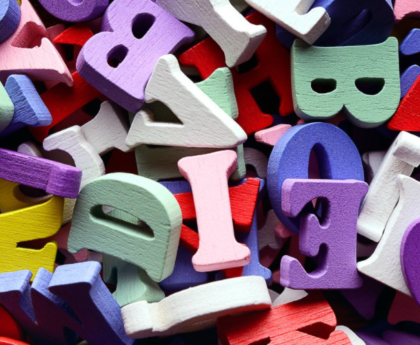Text structure refers to the organizational patterns authors use to present information in written material. Think of it as the architectural blueprint that guides how ideas are arranged and connected throughout a text. When students recognize these patterns, they can better predict what comes next, identify key concepts, monitor their understanding, and effectively summarize central ideas.
Different text types favor certain structures. Narrative texts often follow chronological patterns, while expository texts might use description, cause-and-effect, or compare-and-contrast structures. Argumentative texts frequently employ problem-solution organization. When students understand these patterns, they become strategic readers who approach different materials with appropriate expectations.
The impact is significant: students who understand text structures don’t just read words—they read with purpose, actively seeking organizational patterns that help them understand and remember what they’ve read. This understanding also strengthens their writing abilities as they learn to organize their own thoughts using proven structural patterns.
The Five Essential Text Structures Every Student Should Master
Five primary text structures appear consistently across grade levels and subject areas, forming the foundation for effective reading comprehension instruction.
Description structure presents detailed information about a topic to create vivid mental pictures. Authors use signal words like “for example,” “such as,” and “appears.” Students encounter this in science books explaining animal habitats or weather patterns.
Cause and effect structure explains why something happened and what resulted. Signal words include “because,” “as a result,” and “therefore.” This appears in texts explaining volcanic eruptions, historical events, or character motivations in literature.
Compare and contrast structure examines similarities and differences between subjects. Signal words include “like,” “unlike,” “similar,” and “however.” Students see this when reading about frogs versus toads or comparing ancient civilizations.
Chronology/sequence structure presents information in time order or describes process steps. Signal words include “first,” “next,” “then,” and “finally.” This appears in historical timelines, scientific procedures, and instructional texts.
Problem and solution structure identifies problems and presents solutions, often discussing effects. Signal words include “problem,” “solution,” and “in order to solve.” Students encounter this in texts about climate change solutions or historical conflicts.
Teaching these five structures systematically provides students with a comprehensive toolkit for understanding most academic texts they’ll encounter.
Research-Backed Strategies for Teaching Text Structure Recognition
Effective text structure instruction requires systematic, explicit teaching combined with guided practice. Students don’t naturally develop this awareness—they need direct instruction.
Start by introducing the concept that texts have organizational patterns like buildings have architectural designs. Use familiar examples: recipes follow sequence structure, travel brochures use description, and newspaper editorials employ problem-solution organization.
Graphic organizers provide powerful visual tools. Timelines work for chronological texts, Venn diagrams suit compare-and-contrast passages, and cause-and-effect chains show relationships between events. Different shapes help students visualize how information is organized within each structure.
Signal words serve as textual clues alerting readers to specific patterns. Create signal word charts for each structure and practice identifying these markers in authentic texts. Teaching students to recognize these linguistic clues dramatically improves their ability to identify structures quickly.
Think-aloud modeling shows students your thought process. Demonstrate how you notice signal words, recognize patterns, and use this knowledge to understand the author’s message. Show how structure awareness helps you make predictions and monitor comprehension.
Practice with authentic texts from various subjects helps students apply their knowledge meaningfully. Use science articles, social studies passages, and literary nonfiction to demonstrate how authors use these structures across disciplines.
Developmental Progression: Teaching Text Structures Across Grade Levels
Text structure instruction should follow a logical developmental sequence, introducing simpler structures first and building toward more complex patterns.
Elementary students (K-2) find description and sequence structures most accessible. Young readers naturally understand chronological order from daily routines and story sequences. Begin with highly structured texts using obvious signal words and straightforward patterns in familiar content.
Middle elementary students (3-4) can handle compare-and-contrast structures as their thinking becomes more sophisticated. They can understand similarities and differences between concepts, characters, or historical events.
Upper elementary and middle school students (5-8) develop capacity for cause-and-effect relationships and problem-solution structures. These complex patterns require abstract thinking about event relationships and potential solutions to problems.
High school students should recognize and analyze multiple text structures within longer, complex texts. They should understand how authors combine different structures and how structural choices affect meaning and persuasive power.
Throughout this progression, provide explicit instruction, guided practice, and independent application opportunities. Students need multiple exposures to each structure in various contexts before independent mastery.
Connecting Text Structure Understanding to Improved Writing Skills
Understanding text structures dramatically enhances students’ writing abilities. When students recognize how authors organize information effectively, they can apply these same patterns to their own writing.
Begin by modeling how authors make organizational choices based on purpose. Show how a scientist uses cause-and-effect structure to explain volcano formation, while a travel writer uses descriptive structure to create vivid images.
Teach students to use signal words and transitions that help readers follow organizational patterns. Students writing descriptive paragraphs need words like “for instance.” Those writing cause-and-effect explanations need transitions like “as a result.”
Connect reading and writing explicitly through practice activities. After reading a cause-and-effect passage about weather, have students write their own cause-and-effect explanation about a different phenomenon. Use the same graphic organizers for both analyzing texts and planning writing.
Assessment should evaluate both recognition and application of text structures, ensuring students can identify patterns in reading and use them effectively in writing.
Address Text Complexity Through Structure Awareness
Text structure understanding provides a powerful tool for helping students tackle increasingly complex materials. “Considerate” texts use clear organizational structures with helpful features like logical topic sequences, clear headings, and cohesive transitional words.
However, many content area texts embed multiple structures within longer passages or use subtle signal words. Text structure instruction helps students develop analytical skills for these challenging materials.
Content area teachers play crucial roles. Science teachers can show how lab reports follow specific patterns and textbook chapters use multiple structures. Social studies teachers can demonstrate how historical accounts use chronological structures and policy documents employ problem-solution organization.
This scaffolded instruction begins with clearly structured texts and gradually moves toward more sophisticated materials where students learn to recognize combined structures and infer organizational patterns.
Transform Reading Comprehension Through Structural Awareness
Understanding text structures represents one of the most powerful tools for improving reading comprehension across all subjects. When students recognize organizational patterns, they become active meaning-makers who engage with texts strategically and purposefully.
This transforms students from passive word-readers into strategic comprehenders who can tackle increasingly complex materials throughout their academic careers. The key lies in systematic, explicit instruction that teaches pattern recognition, purpose understanding, and practical application to both reading and writing tasks.
Ready to help your students develop the text structure awareness that will transform their reading comprehension? Start your free 7-day trial of Reading.com today and discover how systematic instruction in text structures can help students become more strategic, successful readers across all subject areas.





